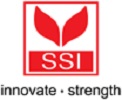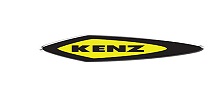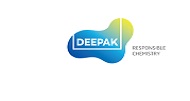
Aluminium Beverage Cans Business
Aluminium beverage cans are the most common type of can. Aluminium beverage cans are the most common form of aluminium packaging used in beverage and food products today, Aluminium cans have a number of advantages over other types of packaging. They are lightweight, strong, and durable. They also provide an excellent barrier to light and oxygen, which helps to preserve the quality of the contents.
There is no need for any additional coatings on the inside or outside of the can. In addition, they don’t rust like steel cans do and they are less expensive than glass bottles.
Aluminium beverage cans are a type of container used to store and distribute various types of beverages. They are made from thin sheets of aluminum that are rolled into cylindrical shapes and then seam welded together. The resulting can is then coated with a variety of different materials depending on its intended use. Aluminium beverage cans are one of the most versatile and popular types of packaging for drinks.
The material is lightweight, durable and 100% recyclable, making it an excellent choice for both businesses and consumers. Mankind’s use of aluminium is not new; its existence has been recorded since ancient times.

Uses and application of Aluminium Beverage Cans
Aluminium beverage cans are used for carbonated soft drinks, beer, and ready-to-drink teas and coffees. The main advantage of aluminium over other materials is its ability to block out oxygen and light. This means that the contents of the can remain fresher for longer. Aluminium cans are also fully recyclable, so they have a low environmental impact.
Aluminium is light, durable and 100% recyclable, making it the perfect material for beverage cans. Aluminium cans are used for a variety of beverages, including soda, beer, energy drinks and more. Plus, they offer a unique printing surface that allows for vibrant and eye-catching designs. They are provide an excellent barrier against oxygen and other gases. In addition, aluminum cans can be recycled over and over again without losing any of their properties.
Aluminium is also one of the most abundant metals on earth and it takes very little energy to produce it compared with some other materials like steel or glass. Aluminium has been a common material for food containers for more than 60 years now because it is both inexpensive and a great insulator which makes it ideal for keeping foods hot or cold.
Types of Aluminium Beverage Cans
There are three types of aluminum beverage cans-the standard can, the stay-on-tab can, and the easy-open end can. The standard can is the most common type of aluminum beverage can. It is made from two pieces of aluminum that are joined together at the seam. The stay-on-tab can is also made from two pieces of aluminum, but it has a tab that stays attached to the can when it is opened. The lid on the top of this can is often called a pull tab because you pull it off like you would pull on a paper towel roll.
The easy-open end can combines both features of the standard and stay-on-tab cans. When this type of can is opened, the top pulls up automatically like with the stay-on-tab can, but there is no tab attached to this opening like with the standard can.
List of Recyclable Aluminum Beverage Cans
Sardine Cans – Flat rectangular sardine cans are also made out of aluminum, and easily recycled. These cans have a peel-off lid, and the lid should be recycled too.
Tuna Cans – Some small tuna cans are made out of aluminum, and also recycle easily. The actual composition of the metal varies from manufacturer to manufacturer. Before you collect tuna cans to take to the recycling center, place a small magnet on the can. If the magnet sticks, it is not aluminum but steel. If the can is steel, it should be placed into your steel can recycling bin if available.
Beer Cans – Beer cans are also made out of aluminum. However, this was not always the case. Before aluminum usage became widespread, beer cans were made out of steel.
Soda Cans – all soda cans are made from aluminum. This is because the metal is easily formed, and is relatively inexpensive, that a small amount of manganese is added into the aluminum to make it stronger. Since aluminum soda cans are so common, most recycling.

Indian Market Outlook for Aluminium Beverage Cans
The Indian aluminium powder market reached a volume of 39,029 Tons in 2021. Looking forward, the market is projected to reach 56,124 Tons by 2027, exhibiting a CAGR of 6.3% during 2022-2027.
Indian consumers are adopting healthier lifestyles, which means demand for food products with minimal packaging has increased. As a result, sales of canned beverages are also increasing as companies are focusing on these trends.
Furthermore, owing to rising disposable incomes, urban population growth and increase in spending power have led to an increase in demand for soft drinks from aluminum cans in the country.
The growing demand for ready-to-drink beverages, such as carbonated soft drinks, juices, and sports drinks, is the major factor driving the growth of the aluminum beverage can market in India. Rising disposable incomes and changing lifestyles are also contributing to the growth of the aluminum beverage can market in India.M
Manufacturing Process
Starting an aluminium beverage cans manufacturing business can be a profitable venture. The demand for aluminium cans is growing, as more companies are using them to package their products.
To start an aluminium beverage cans manufacturing business, first, the market for aluminium beverage cans is worth around $14 billion annually and you will need to procure the necessary machinery and equipment.
You will also need to obtain the raw materials needed for production. Once you have all the necessary resources in place, you can begin production. It is important to have a market for your product lined up before you begin production, so that you can sell your product and recoup your investment.
There are many different styles, sizes and shapes, so it’s important to take some time and think about which would be best for your product line and your company goals. Find the right suppliers for your production needs.

















